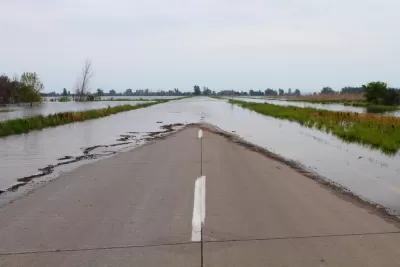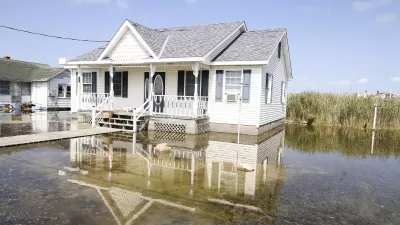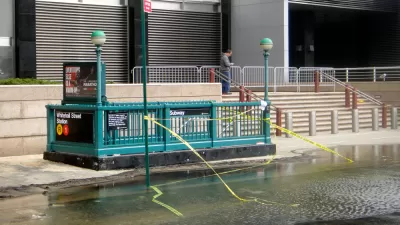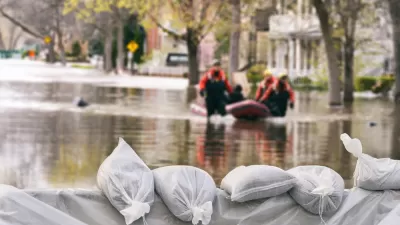While resources pour in for urban climate resilience projects, smaller communities often bear the brunt of extreme weather events.

According to Timothy Schuler, climate adaptation planning in the U.S. "has, with some notable exceptions, tended to focus on large metropolitan areas, particularly in the wake of Hurricane Katrina and Superstorm Sandy." But more recently, "Hurricane Ida served as a harsh reminder that the nation’s rural and smaller coastal communities often bear the brunt of the effects of climate change, suffering extensive flooding and other damage, yet lack the resources to rebuild or to implement measures that could prevent future disasters." These areas, Schuler writes, essentially become a "national climate sacrifice zone," overlooked and underresourced as climate change brings increasingly disastrous effects.
Yet "some 60 million people—1 in 5 Americans—live in rural areas," with the total rising to almost 90 million when including towns of 2,500 to 50,000 people. Weak political support, a low tax base, and "lack of access to the kinds of technical assistance design professionals provide to urban resilience projects" leave rural communities behind when it comes to resilience planning.
To mitigate the problem, organizations such as the Coastal Dynamics Design Lab (CDDL) provide cost-free "design and planning services to underserved areas, specifically around issues of disaster recovery and resilience." Projects like this "point to the value of university-affiliated design studios and research hubs, which at times offer smaller communities the only avenue through which they can access climate adaptation planning assistance." Additionally, "while smaller communities can stymie traditional design and planning models, they can serve as important testing grounds for how to work sensitively in other under-resourced places."
FULL STORY: In Ida’s wake, America’s rural communities need better protection—cities can’t hog climate adaptation

Montreal Mall to Become 6,000 Housing Units
Place Versailles will be transformed into a mixed-use complex over the next 25 years.

Planetizen Federal Action Tracker
A weekly monitor of how Trump’s orders and actions are impacting planners and planning in America.

Four Reasons Urban Planners Can’t Ignore AI
It’s no longer a question of whether AI will shape planning, but how. That how is up to us.

Bend, Deschutes County Move to Restrict Major Homeless Encampment
City and county officials are closing off portions of an area known as Juniper Ridge where many unhoused residents find shelter, hoping to direct people to housing and supportive services.

High Housing Costs Driving Down Transit Ridership in LA
When neighborhoods gentrify and displace lower-income residents, transit ridership suffers, new research shows.

Iowa Legalizes Accessory Dwelling Units
A new law will allow property owners to build ADUs on single-family lots starting on July 1.
Urban Design for Planners 1: Software Tools
This six-course series explores essential urban design concepts using open source software and equips planners with the tools they need to participate fully in the urban design process.
Planning for Universal Design
Learn the tools for implementing Universal Design in planning regulations.
City of Mt Shasta
City of Camden Redevelopment Agency
City of Astoria
Transportation Research & Education Center (TREC) at Portland State University
City of Camden Redevelopment Agency
Municipality of Princeton (NJ)
Regional Transportation Commission of Southern Nevada





























